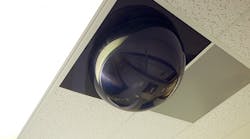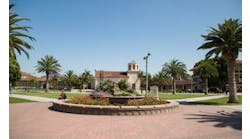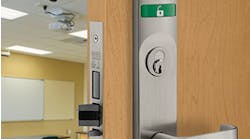Security design is prompted by life changing events, all out of personal control. National incidents, local events, and public demand are all factors in the decision making process toward enhancing security design. Deciding what to do, how to make effective changes, and keep those new factors functional are the larger issues. In regard to security design enhancements, there is no “one size fits all” solution to the design process. For example, building access is a paramount safety item, most generally addressed by architects and security design consultants during the design phase. And yet controlling building access should also be addressed with older existing buildings.
To ensure the success of proposed changes, entities should have the designs evaluated by an outside company that regularly examines plans for applicability to the building, code compliance and ease of public access. If access points are not user friendly, people will try to find a way around the controlled access. To illustrate this point think of how often you’ve seen a door that should shut and lock automatically that has been propped open. These kinds of shortcuts counteract all the hard work that goes into making the facility safer.
Many times administrators are thrust into a sense of emergency and order large scale, costly items in the name of safety and security. A prime example is the school district that installs campus camera systems. The district proudly announces that it now has a CCTV system for added security. Meanwhile, it has neglected to establish an actual monitoring station that would alert them in case of a security breach. Consequently, the new system has capability to record incidents but not prevent them, counter to the goal of security design, which is to get ahead of the events and defuse them as humanely as possible. Protective systems should always be developed for specific assets. The goal of security design is to protect facilities, inhabitants, and the assets contained inside. The first step in the process is conducting a risk assessment to identify, document and address security issues.
Risk is defined as a variable that may have a potentially negative impact on a particular asset. It is characterized by four factors: threat, vulnerability, consequences, and probability (which are not always known). The question should always be asked, “What are we protecting against?” The risk assessment takes all these factors into account and opens the conversation with the security design team.
Security design should also include review of current policies and training cycles. Systems function as intended when training is reinforced at regular intervals. What to do and when to do it becomes engrained and honed, much like muscle memory. Training develops confidence among staff and, with practice, assures operators the system and equipment work as designed.
As much as we want our schools and universities to be safe and inviting, enhancements must be made to maintain an appropriate level of security. The fine line between paranoia and prudent security is the responsibility of the security design consultant. Each location should be assessed from an environmental standpoint, including less obvious factors like:
- Historical events that might lead to future security issues.
- Specific security needs related to physical location.
- Internal, ongoing security measures training.
After evaluating all variables, a good security design team will work closely with the school or university to assist in the decision making process, making your facility safer both inside and out.
Harris is president of Harris Associated Consulting. He has extensive experience in security design and risk mitigation both domestically and internationally. He can be emailed at [email protected].


